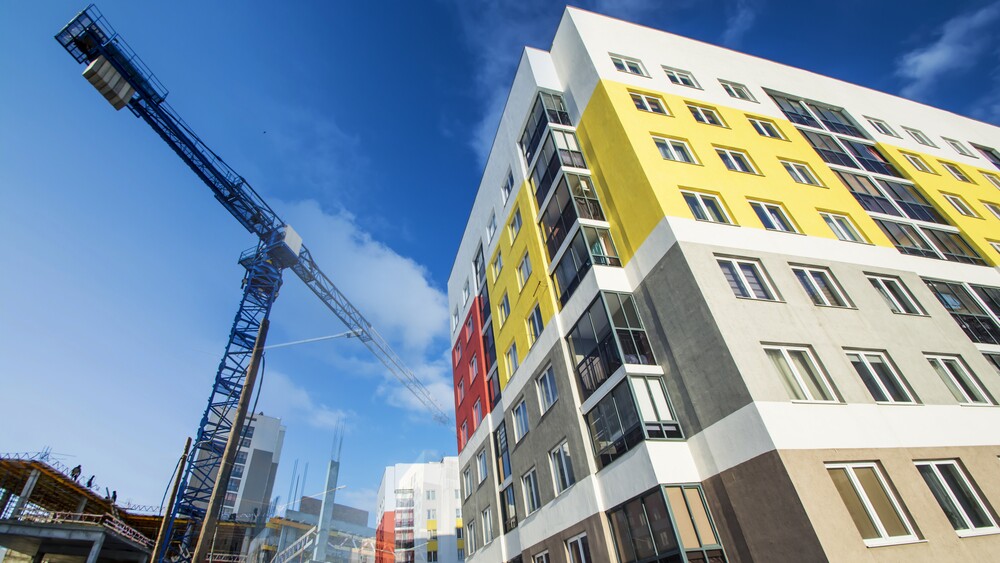A confluence of demographic changes, economic challenges, and shifting consumer preferences have resulted in changes to household composition and, as a result, housing demand. After declining in previous decades, multigenerational living has grown since the 1970s.
According to the Pew Research Center, between 1971 and 2021, the number of people living in multigenerational households quadrupled, while the number of people in other living situations is less than double what it was. The share of the U.S. population living in multigenerational households in 2021 was 18 percent.
Increasingly, families are looking for housing and neighborhoods that can comfortably accommodate multiple generations and a variety of abilities as family needs change over time. With a growing number of families living in—or seeking to live in—multigenerational arrangements, there is a need for more housing and neighborhoods that can accommodate them.
As of 2021, 98 percent of Americans living in multigenerational homes report that their households function successfully. The many reported benefits of multigenerational arrangements include:
- Enhanced relationships among family members
- Increased ability to provide care for family members
- Improved financial situations for at least one family member
- Positive mental and/or physical health impacts, and
- Increased opportunity for at least one family member to continue their education or to pursue vocational training opportunities.
The new ULI report, Making Multigenerational Communities Happen, shares information for real estate developers, city leaders, community groups, and others related to the need to meet the demand for housing units that effectively serve multigenerational households. Specifically, the report:
- Provides considerations for multigenerational home design
- Shares information on multigenerational housing typologies
- Considers what is needed to build multigenerational neighborhoods, and
- Offers conclusions on how to make multigenerational communities happen.
Considerations for multigenerational home design
To realize the vision of multigenerational living, individual homes will need to be designed to meet the needs of people at different life stages and abilities.
As a whole, today’s housing stock is not fit to accommodate the changing needs of multigenerational households. According to the Centers for Disease Control and Prevention, one in four U.S. adults (61 million Americans) has a disability that affects major life activities. Despite this, most homes in the United States are not fully accessible. Improving building accessibility is an important strategy for expanding the housing stock suitable for multigenerational households.
Achieving a higher standard of accessibility at scale will require improvements to the existing building stock. Retrofits and alterations to existing homes can improve the quality of life for residents, with thoughtful design considerations for people with both physical and cognitive differences.
Successful multigenerational homes must also include flexible spaces that allow for both privacy and togetherness. Multigenerational living arrangements can alleviate feelings of isolation and foster closer relationships for members of the household. However, a lack of flexible spaces that allow privacy can be a source of stress.
Design considerations that enable privacy when much of the home is “communal” include:
- A separate bedroom with its own bathroom on the first level of the home
- Bedrooms for each family member with ample space and storage
- A second kitchen and exterior stairs, or exterior access, to separate rooms from main house
- Private entries
- Flex spaces, which allow rooms to be easily converted from living space to workspace.
Multigenerational housing typologies
Expanded housing options and typologies will be required to facilitate multigenerational living. Though intentional multigenerational housing typologies and developments exist, most multigenerational households currently live in “general occupancy” homes that may or may not be conducive to the diversity of their needs.
Supply constraints combined with economic challenges can drive attainability issues for households of all types. Purpose-built multigenerational communities are relatively rare but can be targeted to meet specific needs. These communities are often tied to subsidies or other incentives for affordable housing.
Zoning policies and building codes may prevent new multigenerational homes from being built. Today, about 75 percent of land zoned for housing in major U.S. cities allows only single-family homes, and many policies do not allow accessory dwelling units (ADUs). Multifamily housing faces barriers that single-family homes do not face. Multiunit buildings are often subject to mandatory public hearings to gain approval whereas single-family housing rarely faces this barrier because it is allowed by right.
To accommodate the varied needs of multigenerational households, cities may need to amend their zoning policies and building codes to allow for a diversity of housing types that focus on increasing the number of accessible units.
Housing types that can accommodate multigenerational living include:
- Single-family homes, including those with features such as step-free access or second kitchens;
- Missing middle housing, including duplexes, triplexes, courtyard apartments, and townhouses in walkable settings;
- Multifamily housing units, including those with three or more bedrooms,
- Cohousing—a living option where residents have their own private dwellings, but community areas such as gardens and gathering spaces are shared;
- Accessory dwelling units (ADUs)—small residences that share a lot with a larger primary dwelling,
- Tiny home and cottage communities with small, self-contained units, and
- Shared housing, including situations in which a homeowner cohabits with a renter.
“Grandfamilies"—households led by grandparents that include young children without their parents in residence—confront specific housing availability and attainability challenges, but there is an opportunity to develop housing that meets their needs.
One such example is the Plaza West Apartments in Washington, D.C.—a multifamily development that opened in 2018 with 223 affordable rental units, 50 of which are devoted to grandfamilies. Developed by Mission First Housing Group, Plaza West is estimated to be one of only nine affordable housing developments in the country to target grandfamilies. The development includes a “grandparent library,” a fitness room with exercise equipment for seniors, and a youth activity room. Partnerships with local organizations, including the YMCA, provide services for residents, and members of the Howard University School of Social Work lead support groups for grandparents and teens.
More information on various housing typologies that support multigenerational living can be found at uli.org/multigenerationalcommunities.
Building multigenerational neighborhoods and cities
The design of the built environment—homes, businesses, streets, sidewalks, parks, and other infrastructure—plays a major role in determining how conducive a neighborhood is to multigenerational living.
Important components of neighborhoods and cities that support multigenerational living include:
- Programming and services. Family members of all ages can benefit from supportive programming and services that enhance quality of life. For older adults and persons with disabilities, assistance provided by families can be supplemented by services that expand capacity (for example, paratransit services). For children, neighborhood-based daycare and child-care services, educational enrichment programs, and recreational activities can facilitate important early childhood experiences.
- Supportive transportation infrastructure. Multigenerational families often have diverse mobility needs. Disabilities and medical conditions associated with aging can complicate mobility. Mobility systems that meet the needs of people at all stages of life must be multimodal, meaning they accommodate walking, biking, wheelchairs, cars, and other modes of transportation.
- Inclusive gathering places. The elderly are at high risk of being cut off socially. Housing with common spaces near transportation and other community partners can help reverse the trend of “self-segregated elderly enclaves, with elaborate services but little contact with the outside community.”
- Accessible parks and outdoor spaces. Parks, green spaces, and outdoor play areas are essential components of healthy communities. Designing outdoor space that works for all ages—for example, by providing public restrooms and resting places—is also crucial for encouraging individuals to walk or visit parks while feeling confident and comfortable venturing from home.
Making multigenerational communities happen
Multigenerational living is not a “one-size-fits-all” approach to housing and communities. In fact, the very basis of it revolves around housing that evolves and changes over time according to people’s needs.
As cities move to enable and encourage the development of multigenerational models and typologies, they will better meet the growing demand for housing and places that support multigenerational households, while also meeting a variety of broader housing needs. Multigenerational living is about making housing and communities work for more families and more people, and in doing so, allowing people to thrive at every stage of their lives.






